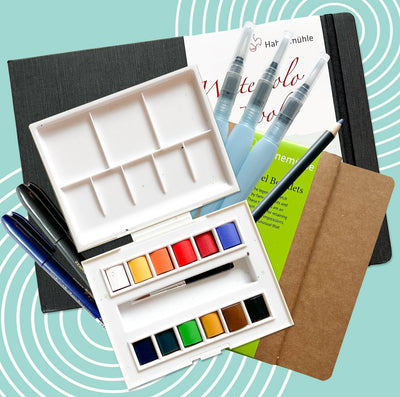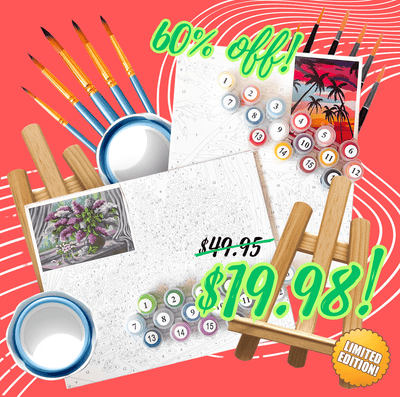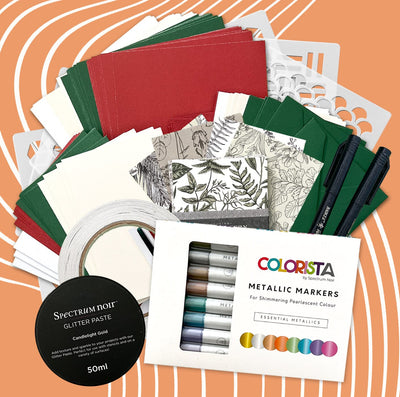Alcohol inks are brightly colored dye-based paints that are most often used in creating free flowing textures. They can be used alone in mixed media projects such as printing and stamping, jewelry making, fabric dying, and brightening up household objects.
Many markers contain dye-based alcohol inks, so the tones and colors might be familiar to you after using markers. However, alcohol inks are more widely applicable than markers, as they can be used to cover a wide range of surfaces besides paper products, and some people even use them to dye clay when working with pottery or clay based sculpture.
In this post, we’re going to outline some of the stellar surfaces that your alcohol inks will work on, along with a few applications for each of those projects.
1. Fabric

If you’ve ever tie-dyed, then you’re already have some experience when it comes to using ink to dye fabrics. Alcohol inks work similarly. A very concentrated use of alcohol ink will make intense colors like those used in tie-dying, but diluting the ink will give you much more subdued coloring.
If you’re already comfortable with your fabric dying skills, you can try dying silk to create fabrics and scarves with an ethereal look.
Alcohol inks also give you a lot of control over the dying process, so that you can make patterns, using ink spray bottles and stencils, and develop similar abstract designs to what you can do on paper. It’s also possible to use alcohol inks to paint on fabrics as if using watercolors on paper.
Alcohol inks are being used to dye fabrics of all kinds from cloth shoes to pillows and bedsheets. Use this method to make cloth scarves, tablecloths, and even sewing fabric.
2. Metal

Metal is a favorite surface among artist for creating gallery-worthy alcohol ink art. Any easy way to begin with painting on metal is to find aluminum canvases that can be purchased from arts and craft stores. And it doesn’t stop with aluminum. Artists are also using these durable inks to paint on stainless steel, brass, and copper as well.
Alcohol ink on metal has its crafty side as well. Many jewelers and hobbyists have taken to using it to dye metal jewelry, including pendants, bracelets, and earrings. For those who are just starting to play around with alcohol inks and jewelry-making there is a lot of low-stakes, inexpensive craft being down with hardware supplies, such as washers to make necklace pendants.
Other metal and alcohol ink projects include metal tumblers, thermoses, and tea kettles.
3. Claybord and Ceramics

Claybord is a fine arts canvas made from artist grade hardboard that is then coated in ground clay. It’s extremely useful for creating full compositions with alcohol ink. Because claybord is smooth and absorbent, it does not smudge, bleed, or feather as easily as canvas and paper surfaces. It is perfect for meditative painting to let the ink colors retain their saturation while still shining.
Ceramics, including tiles, vases, and other shapes, are excellent surfaces for painting both abstractly and to create representational shapes. Ceramic tiles make great coasters, or can be used around the house as artwork.
4. Yupo Paper

Yupo paper is a synthetic, water-resistant watercolor paper that responds well to dyes. This paper allows your ink paintings to keep their bright colors and crisp edges.
Trying it out on paper is one of the best ways of experimenting with the blending and flowing that alcohol inks can do. Play around with reabsorbing ink, using sponges and droppers to add texture, scraping techniques, try spraying alcohol onto the wet Yupo.
Yupo paper is great for mixed media. For example, some people will use alcohol inks to create background effects for stamping or cardmaking. You can also try painting with alcohol inks to create a background, and then once it’s dry, sketching in the foreground to make defined shapes. Keep in mind that this paper is essentially plastic, so your dyes will not absorb into it. The only way that your piece will dry is through evaporation.
Try making greeting cards, signs, backgrounds for letter art, and individual paintings and artwork on Yupo paper.
5.Glass

Glass is an excellent surface for alcohol inks, because it allows the dyes to move and flow freely for creative blending and mixing. Alcohol ink dyed glass creates a stained-glass-like finish that makes for gorgeous lighting when hung in windows.
There are two main ways to seal alcohol inks to a glass surface. 1) Once the finished piece has dried completely, spray it with a glass fixative or clear glass glaze. 2) Before the piece has dried completely, use fire to burn off the alcohol and stabilize the dyes for a full stained glass effect.
This is a great technique for creating glass panels for light to show through, candle holders, as well as the outside of mugs and wine glasses.
Every surface on which you paint with alcohol inks will give you a different tone and feel. It’s not just the project that dictates the canvas, it’s also you and your personal style. Experiment with different surfaces to find your favorite, and drop us a line about what works for you!


